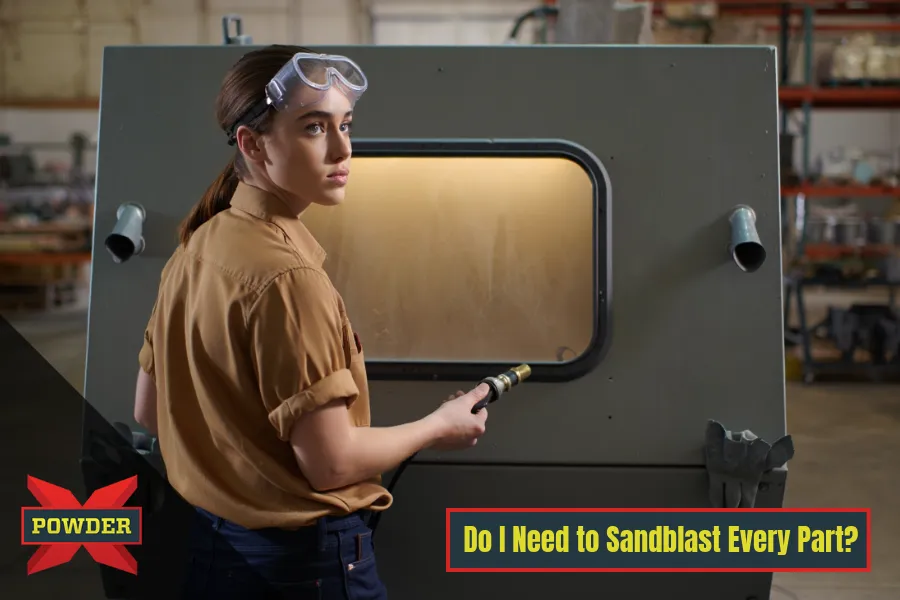
Do I Need to Sandblast Every Part Before Powder Coating?
Let’s bust a myth that’s cost beginners time, money, and reputation: “Every part has to be sandblasted before powder coating.” Really? Let’s unpack that nonsense with a little insight, a little science, and a whole lot of experience.
Where This Myth Comes From And Why It Needs to Die
The internet is full of forum cowboys who swear sandblasting is the holy grail of powder coating prep. They’ll tell you it’s the only way to get proper adhesion. But here’s what they won’t tell you, proper chemicals can do the job of blasting in many cases. And in some situations, blasting can do more harm than good.
Here’s the truth: Not every part needs to be blasted. Some do. Many don’t. It depends entirely on the condition of the part and the desired result.
When Blasting IS Necessary
Blasting is a form of mechanical prep, which means you’re physically altering the surface, removing rust, mill scale, old paint, or heavy contaminants. Here’s when you need it:
Mill scale present? Blast it off. Powder won’t stick to the mill scale for long, it’ll flake with the scale and fail.
Rusty part? Yep, that rust needs to go. Powder won’t bond to rust.
Old paint? Get it off. You can powder over powder (with caution), but never powder over paint.
Weld splatter or rough surface? Blast or grind it down.
Blasting helps you clean, smooth, or profile the part if you need that kind of prep. But…
When Blasting is NOT Only Unnecessary, It’s Harmful
If your part is brand-new, clean metal with only light oils, blasting can actually make things worse.
Here’s why: all metal is porous. If you blast a lightly oiled part, you’re not removing the oil, you’re forcing it deeper into the metal. Then you put that metal into a 400°F oven, and guess what? That oil cooks right back out, through your fresh powder coating, and ruins your finish.
So now you’ve wasted time, media, and energy. Worse? You’ve increased the risk of coating failure.
Here’s What You REALLY Need: Chemical Pretreatment
Chemical pretreatment is your best friend. It:
Removes light oils
Creates a conversion coating that bonds powder to metal
Adds critical corrosion protection
Blasting doesn’t give you corrosion resistance, chemicals do. Blasting is a prep step. Chemical treatment is a performance step. And most powder failures come from underneath. not from the top coat, but from corrosion under the surface. That’s why chemical pretreatment is not optional.
Joey’s Rule of Thumb
“All parts get chemical prep. Some parts get blasted. Know the difference or you’ll lose your edge.”
So, do you need to sandblast every part before powder coating? Absolutely not.
You need to assess:
The condition of the part (new vs. used, clean vs. dirty)
The presence of coatings, rust, or scale
The performance requirements of the finished part (adhesion, corrosion resistance)
Then make your call.
A Final Word
There are coating shops out there making a killing coating millions of clean “widgets” every year. Do they blast every part? No. They use the right chemical systems and the right process for their volume and substrate.
If you’re trying to build a shop that turns heads and earns returns, don’t just blast because a forum guy told you to. Do what works, what lasts and do it right.
If you’re unsure what your parts need, reach out. I’ll point you in the right direction.
